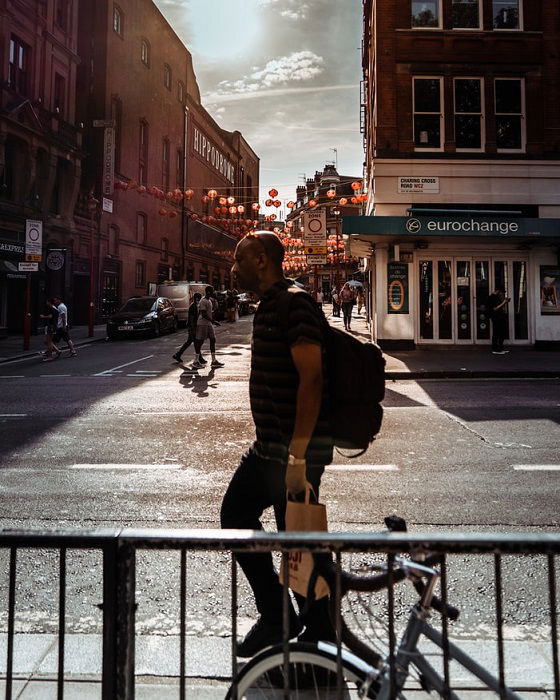The 6-Minute Rule for Framing Streets
The 6-Minute Rule for Framing Streets
Blog Article
Not known Details About Framing Streets
Table of ContentsFraming Streets for BeginnersHow Framing Streets can Save You Time, Stress, and Money.What Does Framing Streets Do?An Unbiased View of Framing Streets

Both at the Gallery of Modern Art (Mo, MA). Influenced by Frank, in the 1960s Garry Winogrand, Lee Friedlander and Joel Meyerowitz started photographing on the streets of New York. Phil Coomes, creating for BBC News in 2013, stated "For those people thinking about street photography there are a few names that stand out and one of those is Garry Winogrand"; critic Sean O'Hagan, writing in in 2014, stated "In the 1960s and 70s, he defined street photography as an attitude in addition to a design and it has laboured in his darkness since, so clear-cut are his photographs of New york city." Going back to the UK in 1965 from the United States where he had actually met Winogrand and embraced road photography, Tony Ray-Jones transformed a wry eye on typically unique groupings of British people on their holidays or taking part in events.
Street photography is a huge category that can be defined in several ways, but it is usually defined by the spontaneous catching of an unrepeatable, short lived minute, usually of the everyday going-ons of unfamiliar people. It is typically shot with broader angle lenses (e. g. 35mm) and usually includes metropolitan atmospheres.
Framing Streets Fundamentals Explained
Documentary photographers typically have actually a defined, premeditated message and an intention to tape-record specific occasions in history (https://framing-streets.mailchimpsites.com/). The gamut of the documentary strategy encompasses elements of journalism, art, education and learning, sociology and background. In social examination, docudrama pictures are often meant to provoke, or to highlight the demand for, societal change
Street photography is typically viewed as unposed and honest, but there are a few street photographers who engage with unfamiliar people on the roads and take their pictures. Road portraits are unexpected pictures taken of strangers while out doing street digital photography, however they are viewed as positioned because there is communication with the subject.
Photographing individuals and places in public is legal in the majority of countries safeguarding freedom of expression and journalistic liberty. There are generally limits on how images of individuals might be made use of and most nations have specific legislations relating to people's privacy.
About Framing Streets
While the common-law provinces comply with the UK, with respect to the liberty to take pictures in a public area, Quebec regulation provides that, in many situations, their publication can take area only with the authorization of the topics therein. The European Union's Human Civil liberty Act 1998, which all EU countries need to support in their domestic legislation, develops in a right to privacy. The right to personal privacy is secured by Post 8 of the convention. In the context of digital photography, it stands at chances to the Article 10 right of freedom of speech. Therefore, courts will normally take into consideration the general public rate of interest in stabilizing the rights via the legal test of symmetry. While likewise limiting digital photography in order to protect privacy legal rights, road photography can still be lawful in France when sought as an art form under certain conditions.

. who just roamed right into a scene), or that are not also identifiable in the picture. https://businesslistingplus.com/profile/framingstreets1/. It likewise does not generally include people that are public figures (e. g - Street photography hashtags. political leaders or celebs). If a picture is considered art, the courts will likewise think about the professional photographer's freedom of imaginative expression; meaning that "artistic" road photography can still be legally released in specific situations
Not known Details About Framing Streets
In Greece the right to take photos and publish them or sell licensing legal rights over them as great art or editorial content is secured by the Constitution of Greece (Post 14 and various other posts) and cost-free speech laws as well as by case law and legal situations. Photographing the cops and publishing the pictures is likewise legal.
In Hungary, from 15 March 2014 any individual taking photographs is technically breaking the regulation if someone wanders into shot, under a new civil code that disallows taking pictures without the approval of every person in the photo - Street photography hashtags. This increases the legislation on grant include the taking of photographs, in enhancement to their publication
'Concealed digital photography' (kakushidori concealed, surreptitious photography) 'taken digital photography' (nusumitori with no purpose of obtaining permission) and "fast digital photography' (hayayori prior to authorization and refusal can be given) are restricted unless in the previous permission is acquired from the subject instantly after taking the photo. People have rights to their photos he has a good point (shzken, droit de picture).
Report this page